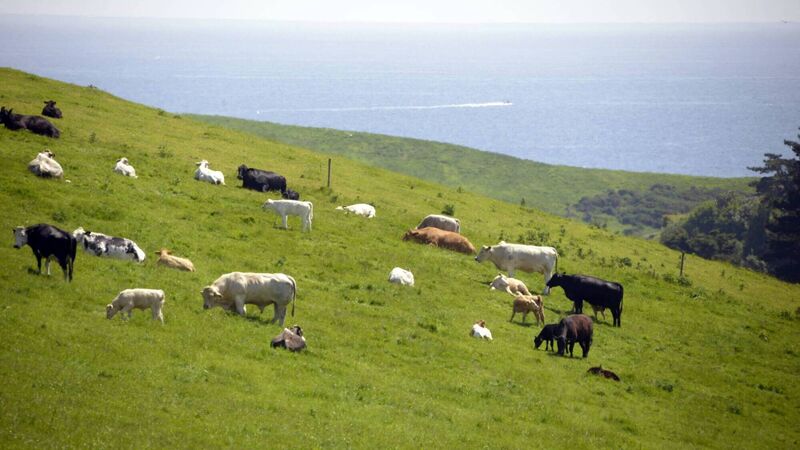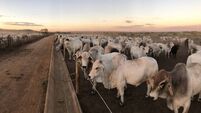Farmers demand fairness in CAP talks saying they are doing more for less

CAP negotiations have stalled because of a disagreement over the proportion of direct payments that should be ring fenced for eco-schemes. Picture: Denis Boyle.
Fairness, equality, convergence and rewarding the ‘genuine farmer’ were among the key points that were raised during a meeting on CAP of the Joint Committee on Agriculture with farm leaders on Wednesday.
Negotiations around the €270 billion CAP in the EU Parliament were adjourned two weeks ago after a disagreement between the sides as to what proportion of the direct payments income supports for farmers would be ring-fenced for new eco-schemes.
The Parliament also wants a fairer CAP in terms of funds distribution per hectare through the capping of the huge direct payments bigger farms get, and the redistribution of that money to smaller farmers.
Tim Cullinan, IFA, in his address to the Committee said that funding for eco-schemes in the new CAP would come from Pillar 1 and would be cut by as much as 55%-60% when compared with the current budget.
“This is another way of redistributing funding from farmers - a cut across the board,” he added.
“Any farmer that is farming with environmentally high ambitions is going to have to be funded for that.
“33% of the money here is already going into environmental schemes and so there should be a lesser eco-scheme for Ireland."
Mr Cullinan also pointed out that convergence would keep farming “viable” and that it was imperative for a ‘genuine farmer’ to be recognised in the next policy.
“The genuine farmer is important because it must be that funding allocated in CAP goes to the farmers who are getting up in the morning and doing the work.
“There should be a mechanism in place - for farmers that continue to lease out their entitlements after two years - for trading those entitlements and the farmer leasing the entitlements should also be given the option to buy them."
Pat McCormack, ICMSA, told the meeting that CAP reform was putting bureaucracy ahead of farmers at a time when EU funding had been cut.
“Farmers are being asked to do significantly more for less - there are huge aspirations out there from an environmental point of view for farmers to deliver more and more to the EU tax payer for less and less,” the ICMSA’s president continued.
“When it comes to the genuine farmer, funding needs to go to the people who are working the land, depending on that land, and keeping that land in good faith.
“We are in a time now where commercial farmers could be facing anything between 40% and 50% cuts to their single farm payment between one linear cut and another and of course convergence.
“While convergence is a great aspiration - flatten the payments and make all people equal - it won’t happen without consideration being taken for the overall funding the farmer has.
“We have seen small productive holdings lose out in the past - people with between €8,000 and €16,000 of a single farm payment.
“They found themselves substantially penalised under convergence. And yet there were some beneficiaries who had multiples of a single farm payment.”
He also highlighted how ICMSA “strongly supported" a capping of payments at €60,000.
Dermot Kelleher, ICSA, meanwhile highlighted as "important" convergence, eco-schemes and CRISS - the proposed ‘front loaded’ payment for Pillar 1 under CAP post 2020 - which allows a member state the option of paying a front loaded payment on hectares up to the national average.
In Ireland’s case, the national average farm size is 32ha, so Ireland could decide to pay a top-up on the first 10ha; 10-15ha; or the full 32ha.
To fund this, a member state would have to apply a linear cut to all farmers’ payments and all farmers would qualify for the top-up irrespective of farm size or total payment.
“Farmers are being asked to do more and more for less and less,” added Mr Kelleher.
“If the EU wants a greener CAP then it needs a scheme that is targeted at cattle, sheep and tillage farmers, most of whom are barely viable, otherwise we are sending out a signal that anyone who wants to farm must be a dairy farmer.
“In our view the average sized sheep and tillage farmer is totally dependent on CAP supports.
“According to the 2019 Teagasc National Farm Survey the average payments from Pillar 1 on a dairy farm were €280/ha; the suckler farmer got €240/ha; a beef farmer got €290/ha; the sheep farmer got €245/ha; a tillage farmer got €320/ha.
“How can it be fair that a very profitable dairy farm is getting more per hectare than a suckler and sheep farmer on a per hectare basis?”
Colm O’Donnell, INHFA, said CAP had served farmers well since its inception but the latest reform needed to bring fairness into proceedings.
“The Minister for Agriculture has a duty of care to the 125,000 Irish farmers who are recipients and beneficiaries of payments," he continued.
“Department of Agriculture figures show that the most productive farms are actually the farms between €200 and €300 per hectare which is around the Irish average.
“On the eco-scheme, during the last reform greening meant €30 for one farmer and €300 per hectare for another farmer, both of whom carried out the same measure - retention of permanent grassland.
“Now, one farmer can get €48/ha and another farmer gets €210/ha for carrying out the same measure - the retention of permanent grassland.
“So, why would you pay one farmer €162 more for carrying out the same measure?
“This is why the eco-scheme has got to be fair and provide a level playing field for all types of farms and enterprises.
“There must also be a legitimate expectation that all those farmers will get a uniform payment per hectare for carrying out similar environmental objectives.”
Thomas Keane, Macra, added: “Over the last 25 years we have seen lots of promises on generational renewal and supports for young farmers in CAP.
“Now, more than ever we as young farmers need policies that deliver real positive impact for our sector.
With the elevation of generation renewable to one of the nine key objectives under the new CAP it is a clear signal from the EU Commission to member states that supports targeted at young farmers must be a key priority.
“Merely maintaining the status quo will not be enough to deliver on what is required to improve and encourage generational renewal.
“Continuation of the Young Farmer top up and the National Reserve is crucially important.
"4% of the funding from Pillar 1 must be ring fenced for young farmers and the interventions that fit under that 4% must end up in the hands of young farmers to support their businesses.”









